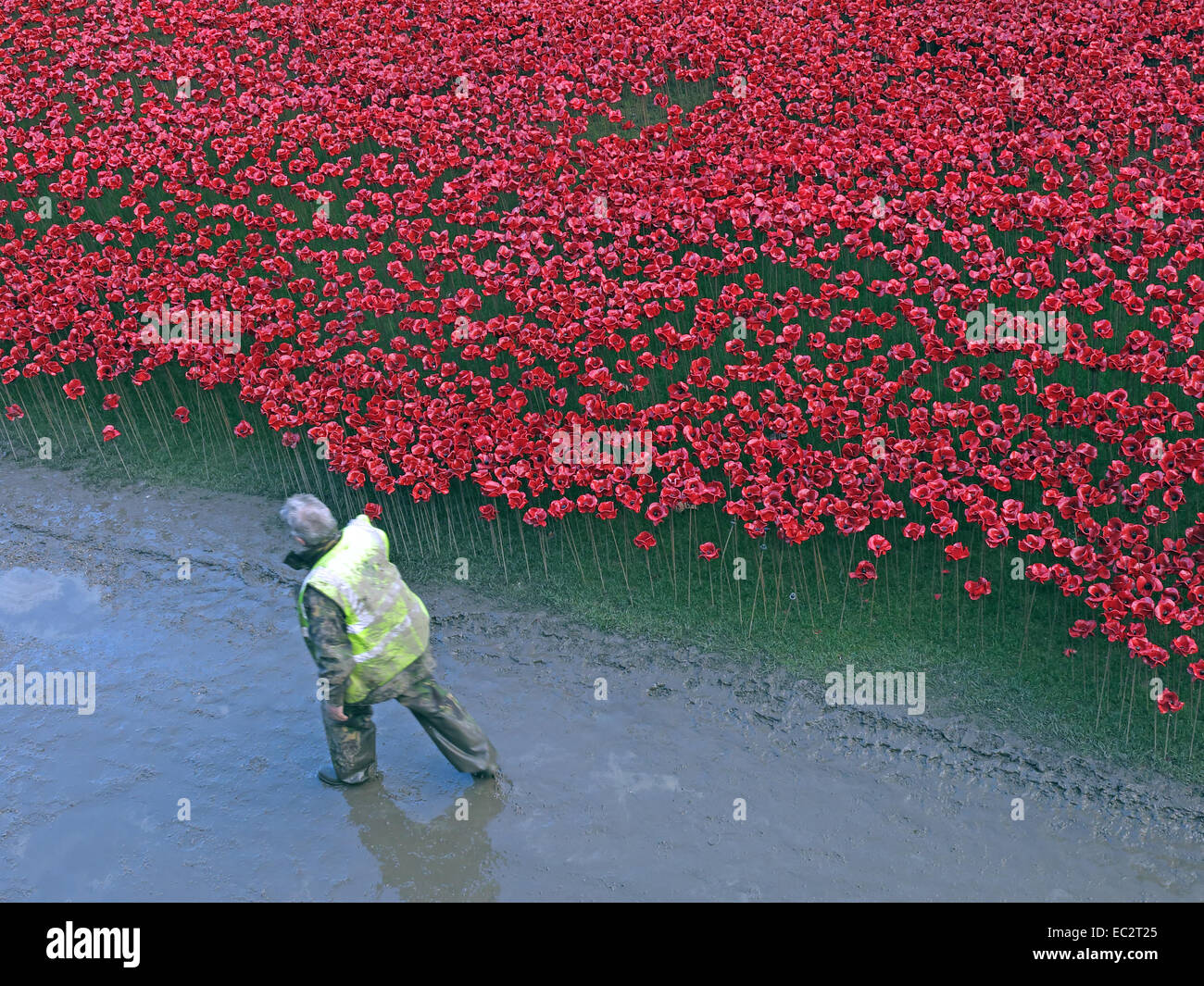Volunteer passes Blood Swept Lands and Seas of Red poppies, at The Tower of London, England UK

Image details
Contributor:
Tony Smith / Alamy Stock PhotoImage ID:
EC2T25File size:
34.3 MB (2.8 MB Compressed download)Releases:
Model - no | Property - noDo I need a release?Dimensions:
4000 x 3000 px | 33.9 x 25.4 cm | 13.3 x 10 inches | 300dpiDate taken:
17 November 2014Location:
Tower Hill, London, England UKMore information:
Blood Swept Lands and Seas of Red was a work of installation art placed in the moat of the Tower of London, England, between July and November 2014, commemorating the centenary of the outbreak of World War I. It consisted of 888, 246 ceramic red poppies, each intended to represent one British or Colonial serviceman killed in the War. The artist was Paul Cummins, with setting by stage designer Tom Piper. The work's title was taken from the first line of a poem by an unknown World War I soldier. The installation was visited by the Princes William and Harry and the Duchess of Cambridge on the day of its opening, and by the Queen and Duke of Edinburgh on 16 October. It is estimated that five million people saw the memorial, and the huge visitor demand saw Prime Minister David Cameron and other politicians join calls to try and extend the period for which the installation remained at the Tower so that more visitors would be able to pay their respects. Tower officials resisted such calls, stating that the transience of the installation was a key part of the artistic concept, and that the poppies would be removed as planned and distributed to their purchasers. On 8 November it was announced that the Wave segment – a steel construction with poppies around the Tower entrance – would remain in place until the end of the month, and that the Wave and the Weeping Window segments (both made by the Theatre Royal, Plymouth) would be taken on a tour of the UK lasting until 2018, and would then go on permanent display at the Imperial War Museums in London and Manchester.